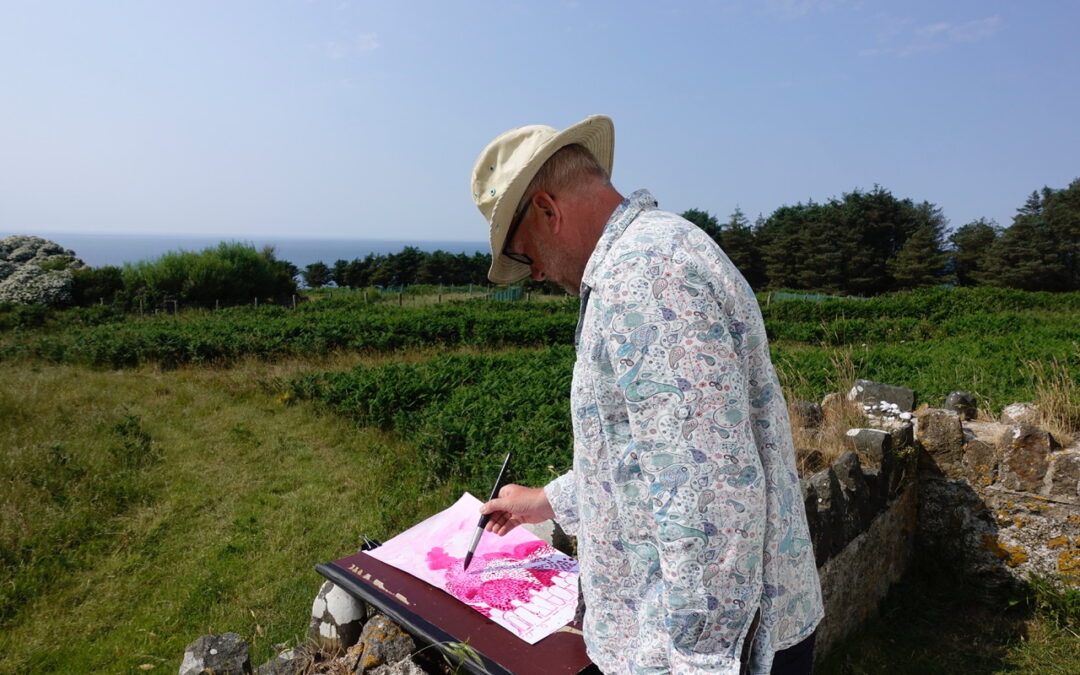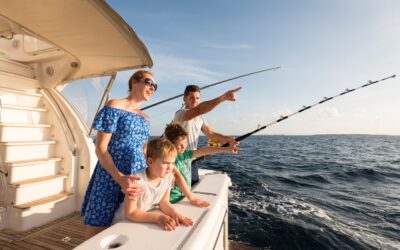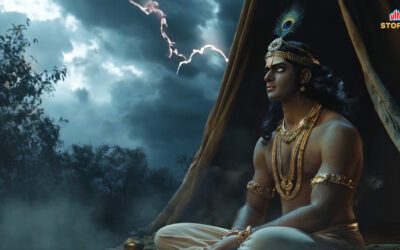Phill Hopkins is a British contemporary artist whose versatile practice has a multifaceted nature. He has created a body of work that is remarkably diverse, yet is firmly rooted within a complex and coherent artistic strategy. He is predominantly a painter, who makes drawings and photographs, and sometimes makes sculpture. He works with a range of media, from the traditional to the unconventional. Born in 1961 Hopkins was brought-up in a working class family in Bristol, in southwest England. Although school was difficult he excelled at art, but did not experience the world of art beyond the classroom until accidentally visiting The Arnolfini gallery when he was fifteen. After working in a warehouse and a bakery he was accepted by Goldsmiths College of Art in London. Hopkins has exhibited in museums and galleries including The Imperial War Museum, Kettles Yard, Laing Art Gallery, Hungarian Museum of Photography, Whitworth Art Gallery, Leeds Art Gallery, John Hansard Gallery, The Usher Gallery and The Henry Moore Centre for the Study of Sculpture.
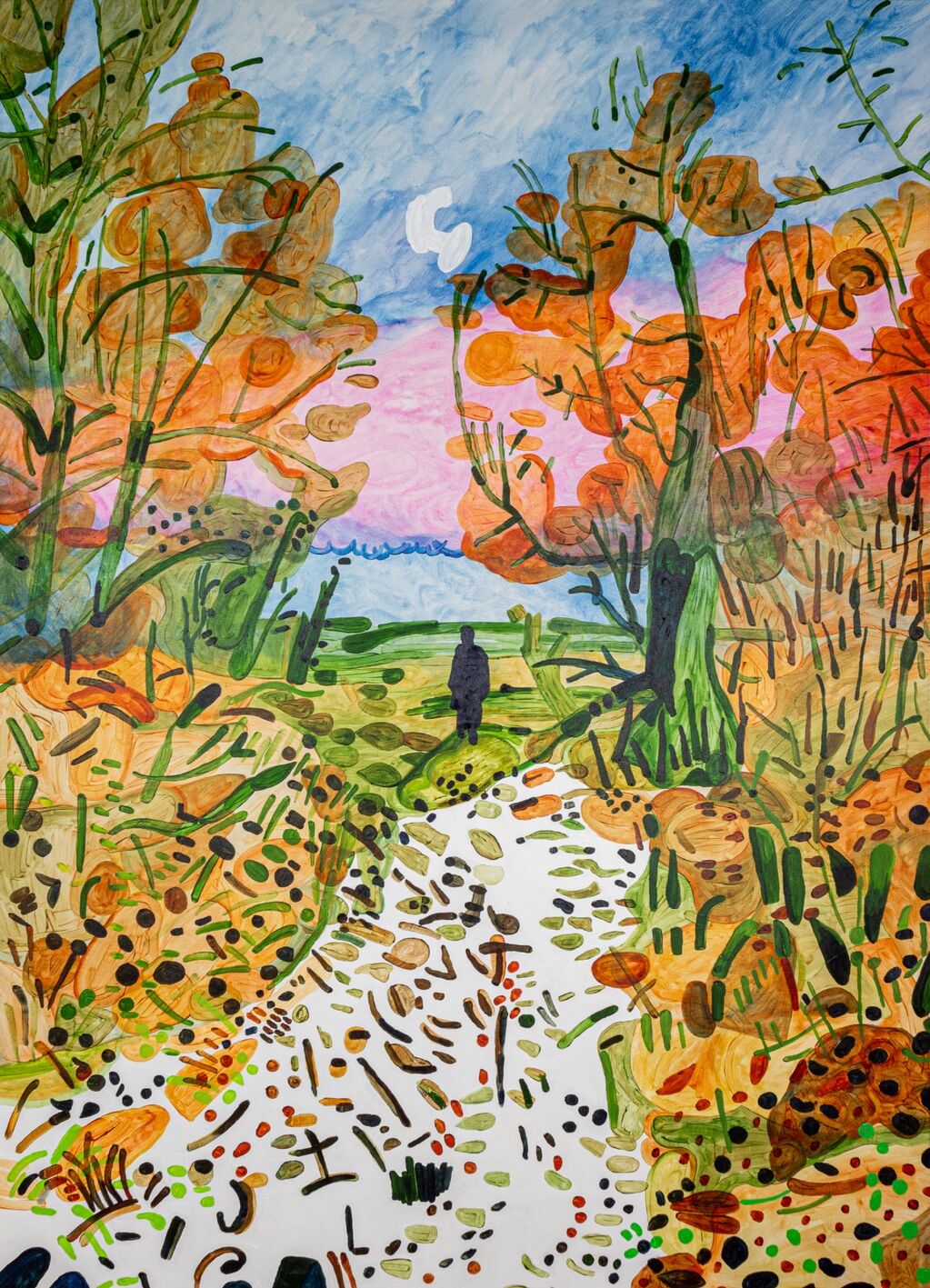
What’s your artistic background?
I’ve always drawn and made things, I loved art at school and I was good at it. I can’t remember seeing any art in my childhood, apart from the things I made and that I may have seen on TV. At home we didn’t have pictures on the wall or really any books. As a teenager I had really good art teachers and they introduced me to lots of things. I would go to the library and pour-over pictures. It wasn’t until I got to Goldsmiths’ when I realized I had arrived at a place that I had never been before, but had always longed for. I had found myself.
What’s integral to the work of an artist?
I’ve always worked hard. Even as a student people remarked that I was always in the studio early and left late. I need to trust myself and go with my gut instinct. I need to be gentle with myself.
What role does the artist have in society?
It would be wrong of me to elevate the artist above anyone else in our world. I feel I’m part of the delicate and exciting life-giving mycelium-like connections that unite us all. Perhaps my role is to be present to myself and the world whilst I journey in and through it, to notice things, to report back, to ponder and to touch.
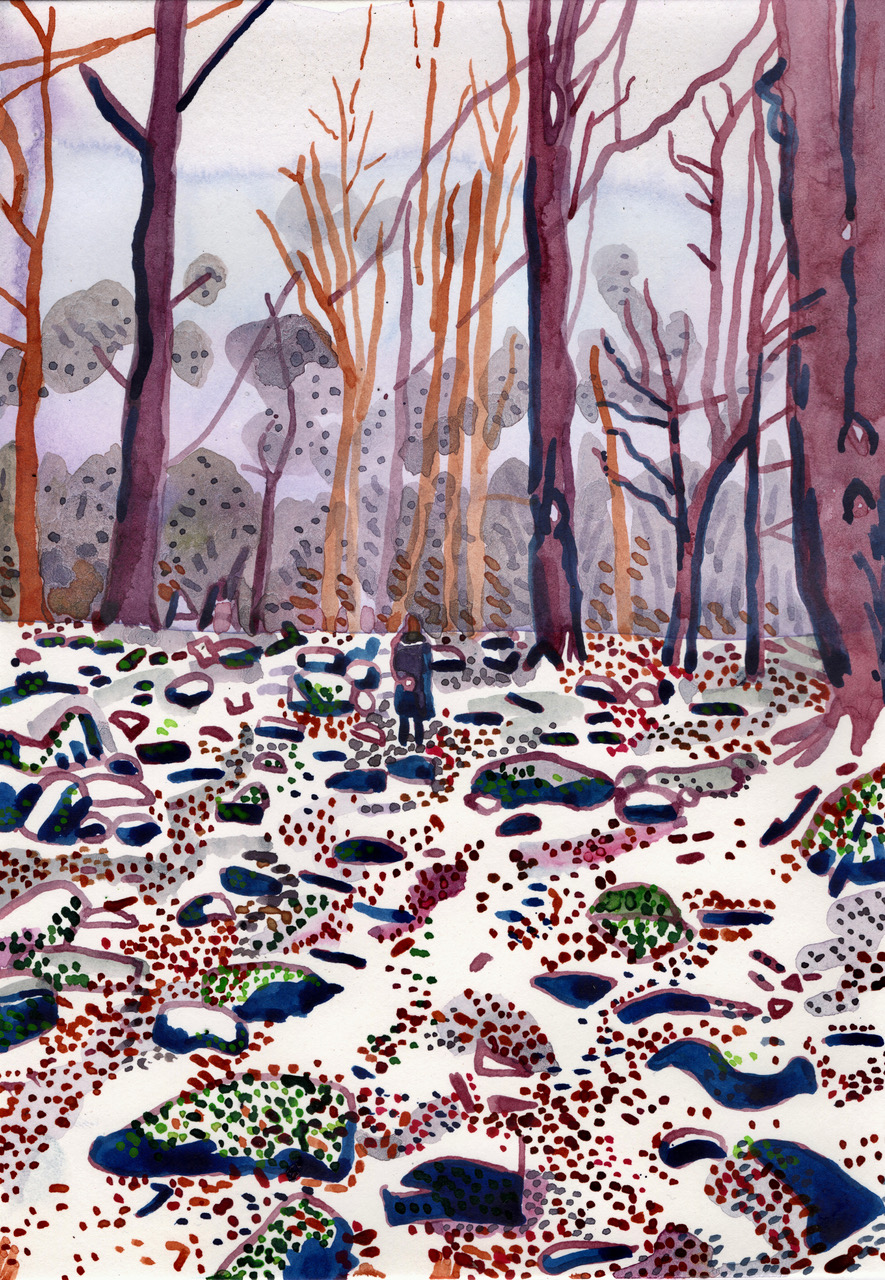
Walking-Ahead-Bottle-Green-Coat-in-Adel-Woods
What art do you most identify with?
Perhaps simple, straightforward and unpretentious. I’m attracted to honesty. I’ve always looked at a lot of different artists and my head is full of them.
What themes do you pursue?
In my recent work I have been drawn back to the landscape. The landscape and nature is grounding. The landscape invites me to physically navigate it, drawing me away from being too confined within my own head. The landscape allows me to be aware of the elements external to myself and my thoughts. The landscape acts as a mirror, reflecting patterns in myself, inviting and allowing me to make intimate physical and emotional connections. The landscape connects me to my own history, the person I was and my ancestry. The landscape allows me to shift my perspective and to feel present in my own body.

What’s your favourite art work?
That’s a really difficult question. As soon as I start to think a carousel of images appears in my mind of artists such as Edvard Munch, Carl Andre, Robert Rauschenberg, Milton Avery, Sidney Nolan, Philip Guston, Georg Baselitz, Julian Schnabel…
More and more I am aware that all the artists I’ve ever looked-to are with me in the studio. I continue to actively welcome them, my door is always open. As a young artist perhaps I pushed away any signs or mentions of the work of other artists; the entanglement of ego. Now, with age and wisdom, I acknowledge and warm to their enriching company.
Describe a real-life situation that inspired you?
We went out in the pouring rain of Storm Babet in full waterproof clothing and still got wet. It was fantastically exciting and exhilarating. There was no one else around and we felt a complete sense of freedom. I made a lot of photographs, many of no use whatsoever. Some were made whilst I walked with a waterlogged lens. I think they are not “good” photograph, but, as I’m not a photographer, it doesn’t matter. I think they are really interesting images. These are now in a folder I keep of possible images to work from.
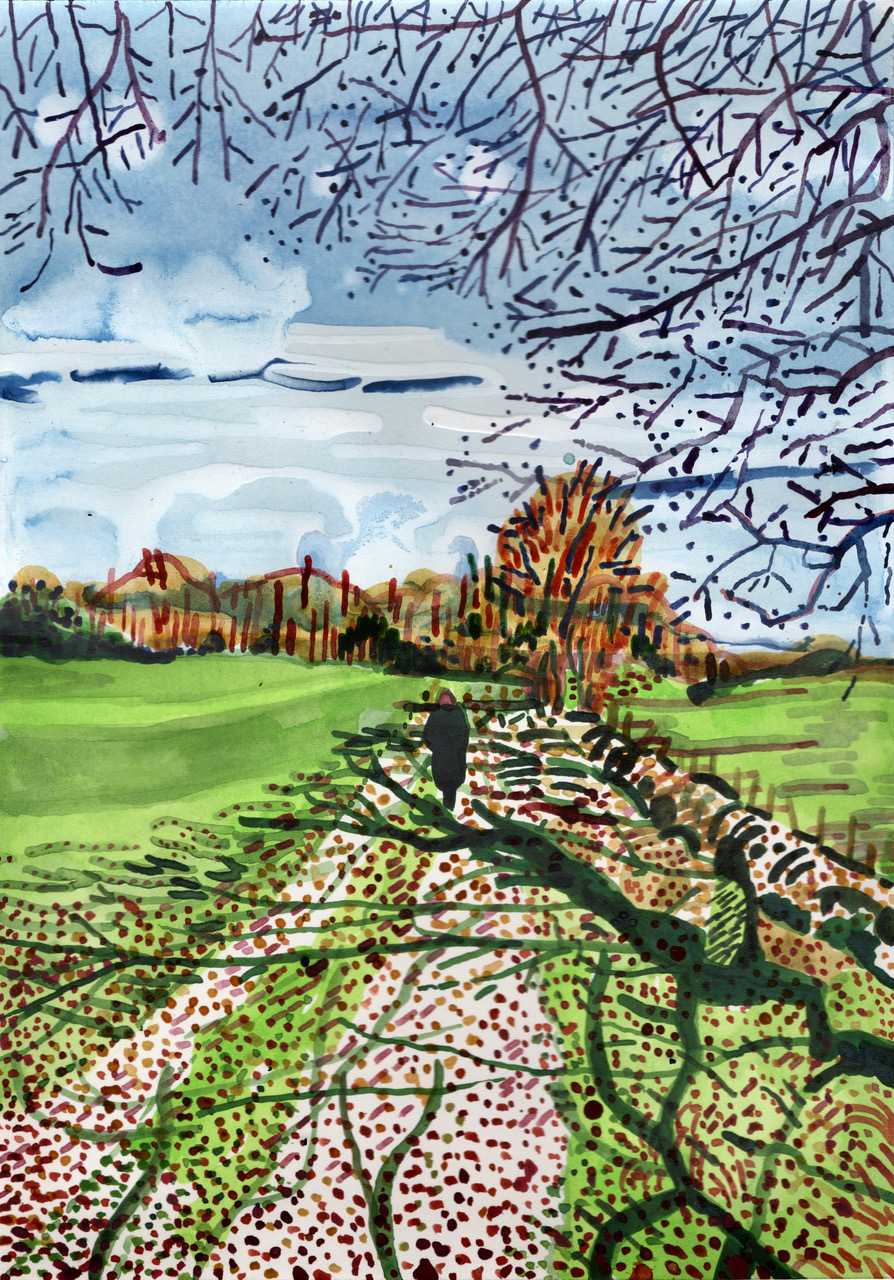
Walking-Ahead-Bottle-Green-Coat-Towards-Arthington-Quarry
What jobs have you done other than being an artist?
At school I sold hot-dogs in the winter and ice cream in the summer. When I was eighteen I worked as an assistant chef in Sienna. I was a baker and then a cook in a vegetarian cafe. I’ve worked in lots of bars. I’ve taught art to young children and right through to very elderly people.
Why art?
Art is my first language, it’s how I best express myself and communicate to and with the world. I’m dyslexic so I have always struggled, especially with reading and spelling. I feel that I don’t really have a choice other than to make art.
What is an artistic outlook on life?
I think it’s about being creative no matter what situation you are in. It’s about joining in and participating in the rhythm of creation.
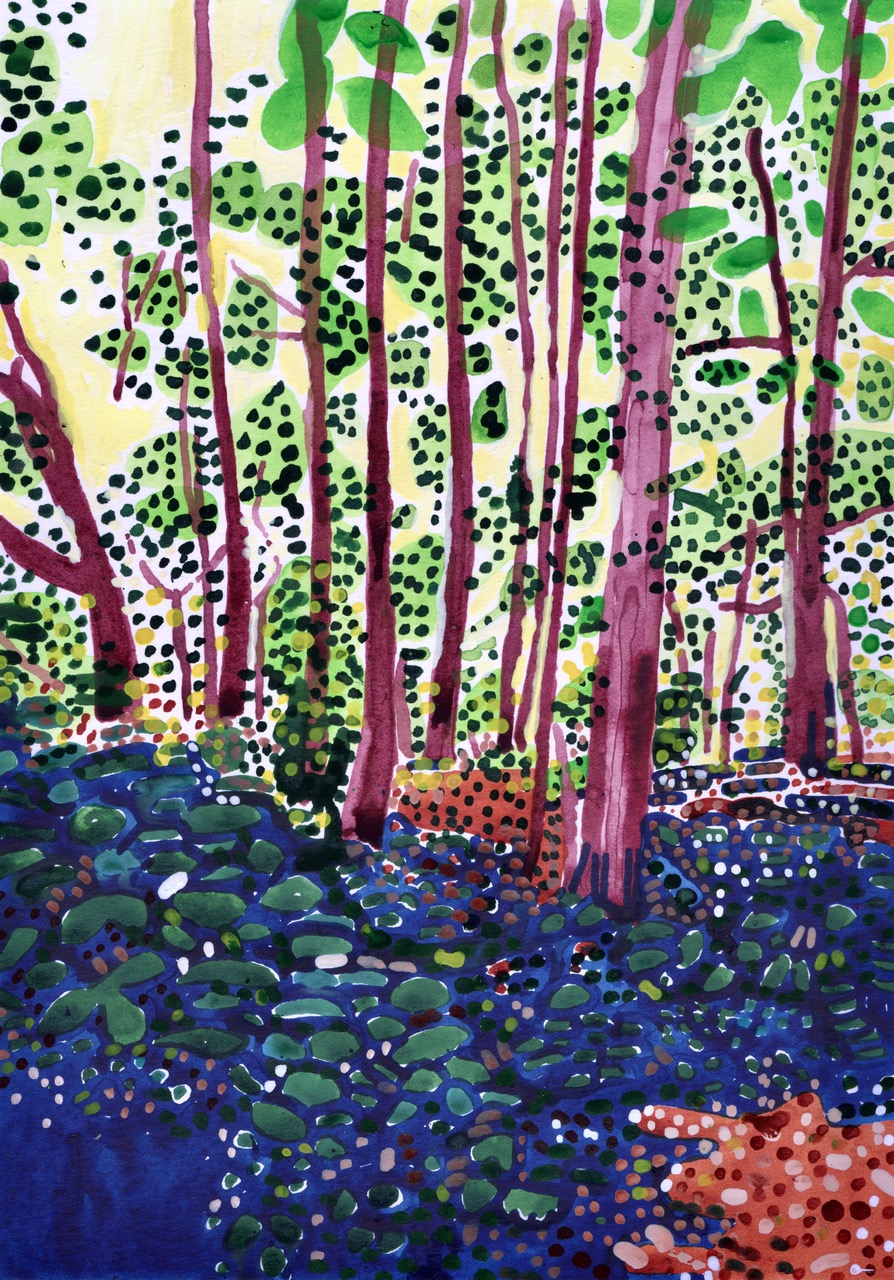
What memorable responses have you had to your work?
As a young artist when I had a show of steel sculptures and drawings, a visitor wrote, “Hopkins can neither weld nor draw”. A collector in New York told me that I “draw like Van Gogh and use colour like Hockney”.
What food, drink, song inspires you?
My studio is in the garden at the back of the house. In the front garden is my vegetable patch. I will often pick a delicious salad and then return to the studio to eat it in front of the painting I’m working on, my eyes flitting between the colours I’ve used and those of the salad. Later on in the afternoon, when the sun is over the yardarm, I might enjoy a nice English IPA whilst I work. There is always music in my studio and it’s a beautiful companion. I like to work from my gut so listening helps to occupy my mind. At the moment I’m listening to a lot of music by the British folk singer Sam Lee and the Russian Rostropovich playing the English Britten.
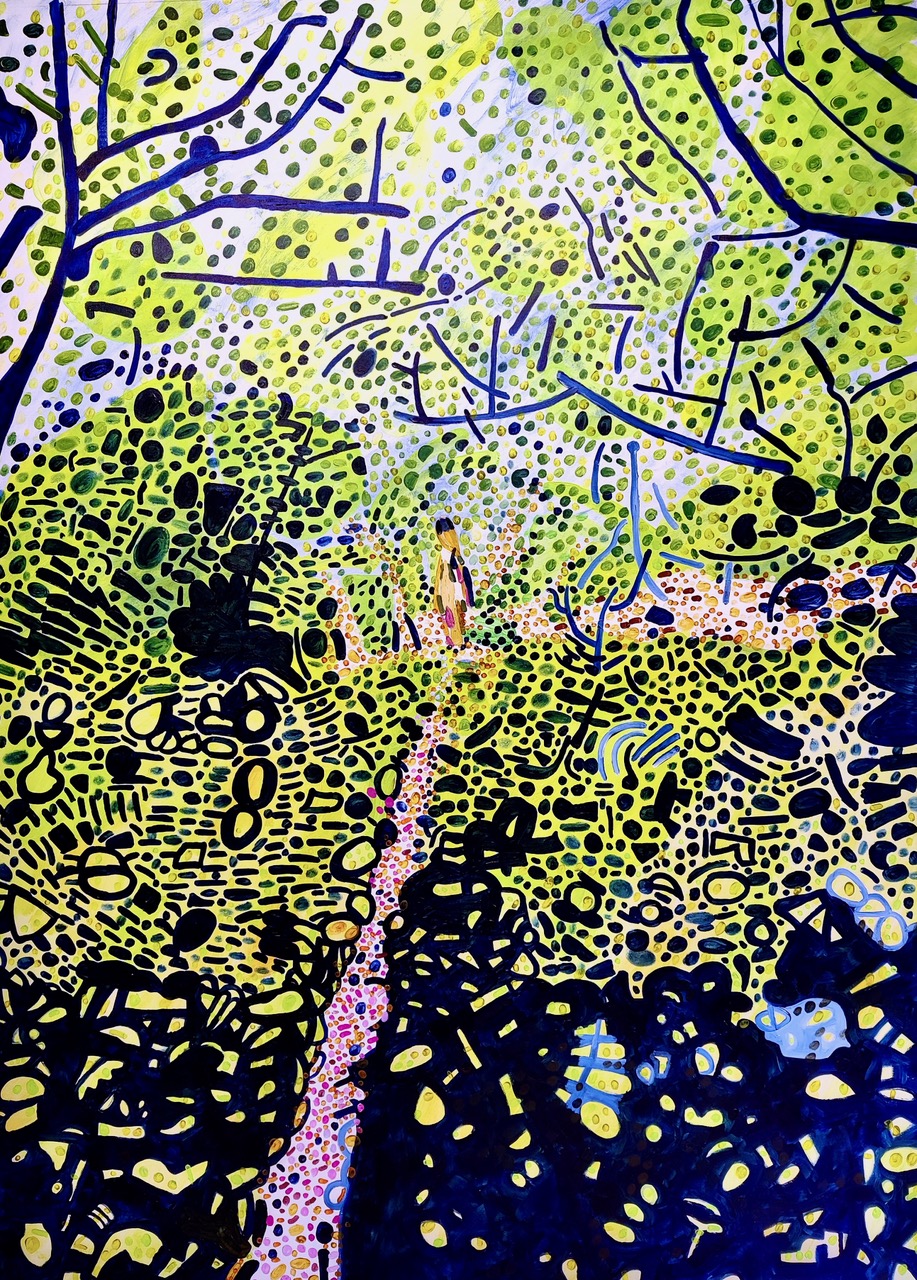
Is the artistic life lonely? What do you do to counteract it?
I really enjoy working by myself. I enjoy the solitude of being with and in myself. I don’t feel lonely whilst I’m in my studio, but I might feel a sense of loneliness at other times in my life, but that’s something else. I am encouraged to be in my own presence, I talk and tell myself, that all things will be well.
What do you dislike about the art world?
I dislike big egos, showoffs, uncaring and unsupported attitudes.
What do you dislike about your work?
My work is a life source, but if I was pushed for an answer, perhaps it would be how it completely occupies every second of every day. I have a great deal of work in private and public collections and I miss a work when it goes off and wonder what it’s up to.
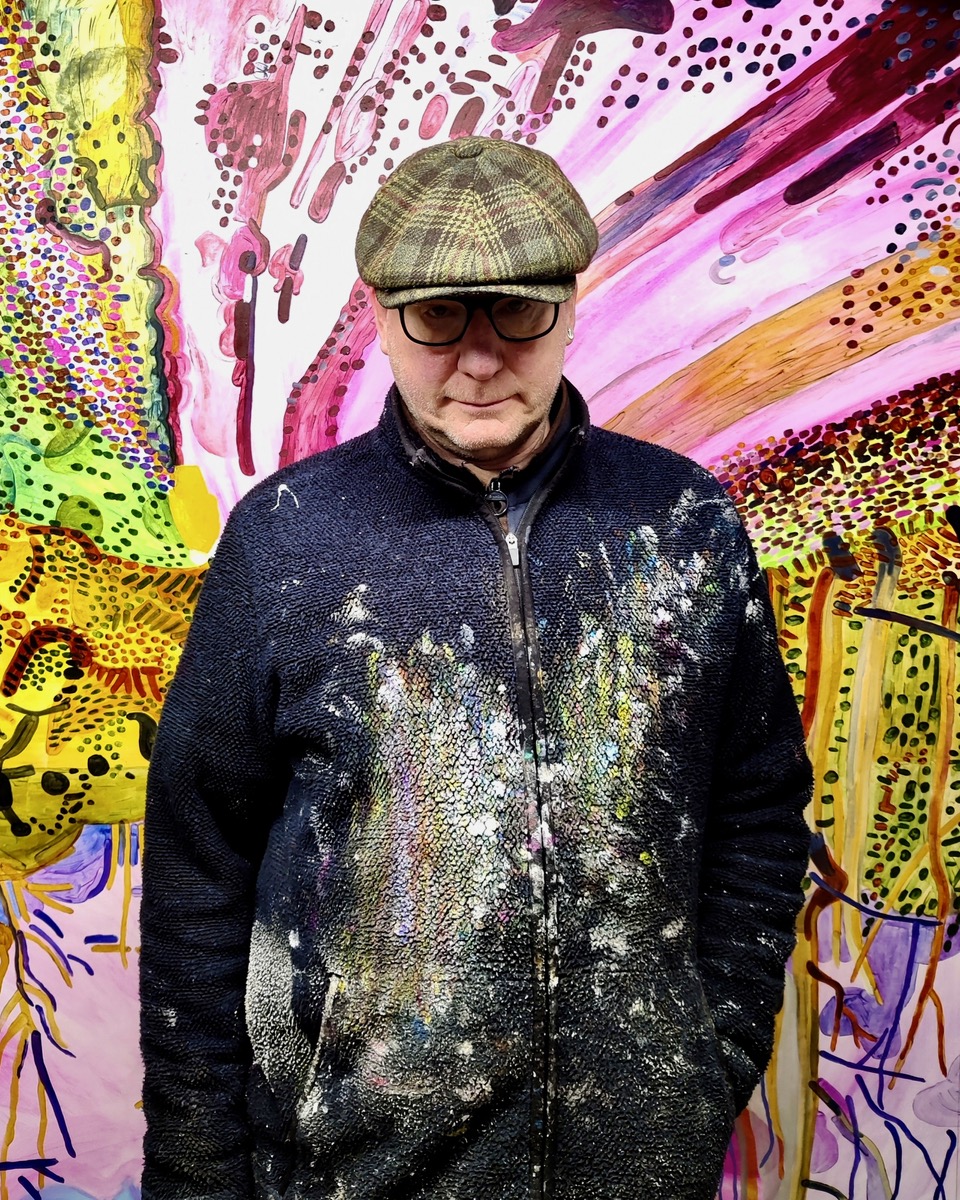
What do you like about your work?
It is simply how I communicate in and through the world and even more important, with myself.
Should art be funded?
There should be good funded art education available to everyone, it is vitally important to how we are as a society. Museums and galleries should have free access for everyone, it reveals what we value as a society. Culture is what defines us and acts as a mirror of sorts.
What role does arts funding have?
I think it’s about giving access. Whether that’s for children or underrepresented groups, or for anyone that’s interested really. It’s about offering things that communities wouldn’t normally have a chance to experience.
What is your dream project?
I think I would really like to travel to Australia and make work there. I imagine I would make much bigger work than I do here in England.
Name three artists you’d like to be compared to.
Golly! If I have to answer then Edvard Munch, Vincent Van Gogh and Philip Guston. But there are lots of others though.
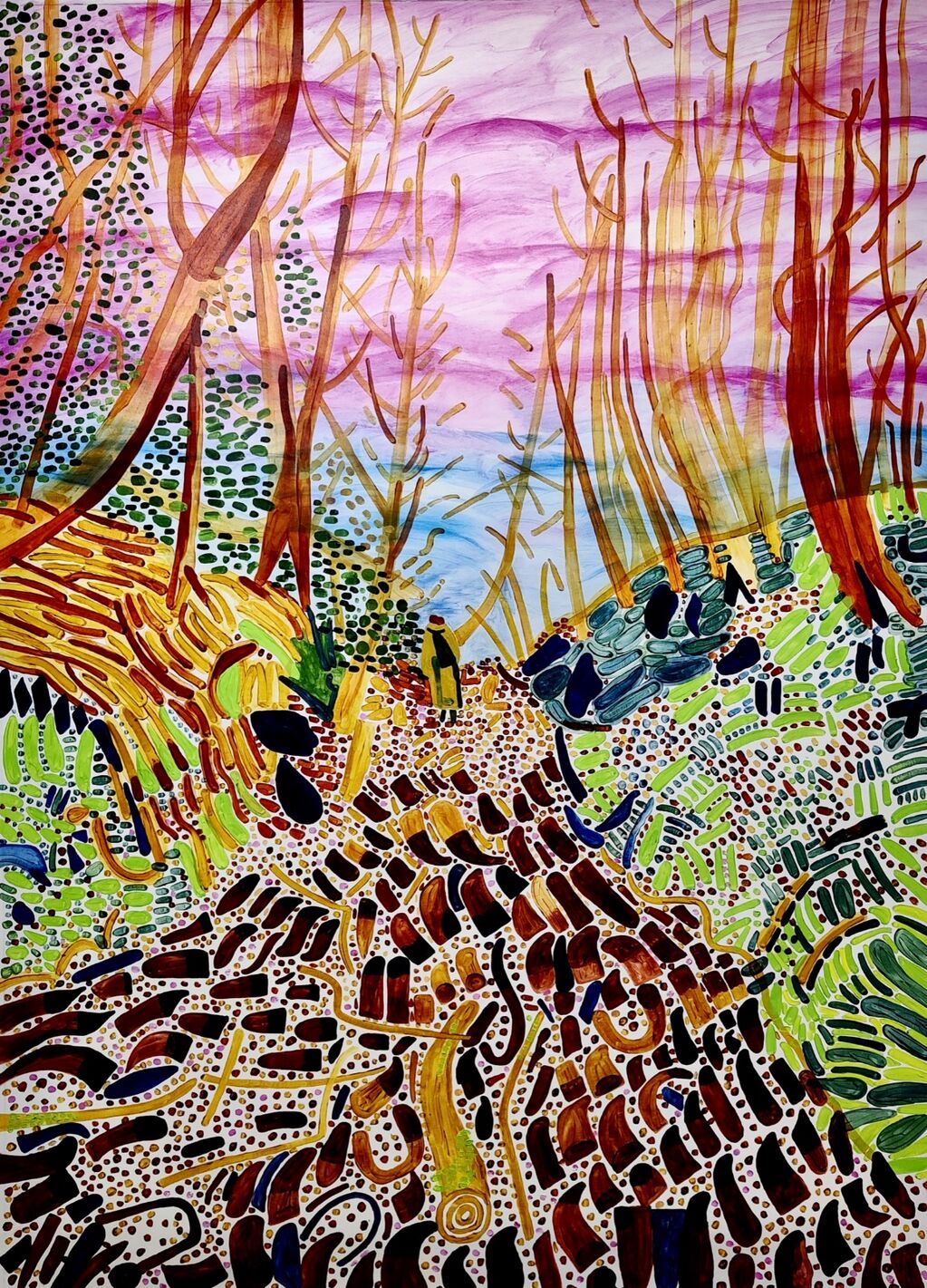
Figure-Beyond-the-Mud-and-Fallen-Branches-Walking-Ahead
Favourite or most inspirational place ?
I love being at the edge of the sea. It might be the cold grey North Sea, which is the nearest to where I live or the Mediterranean, warmer and bluer, but any sea anywhere.
What’s the best piece of advice you’ve been given?
I remember my former teacher and friend Carl Plackman said to always leave something unfinished so there’s always something to do the next day.
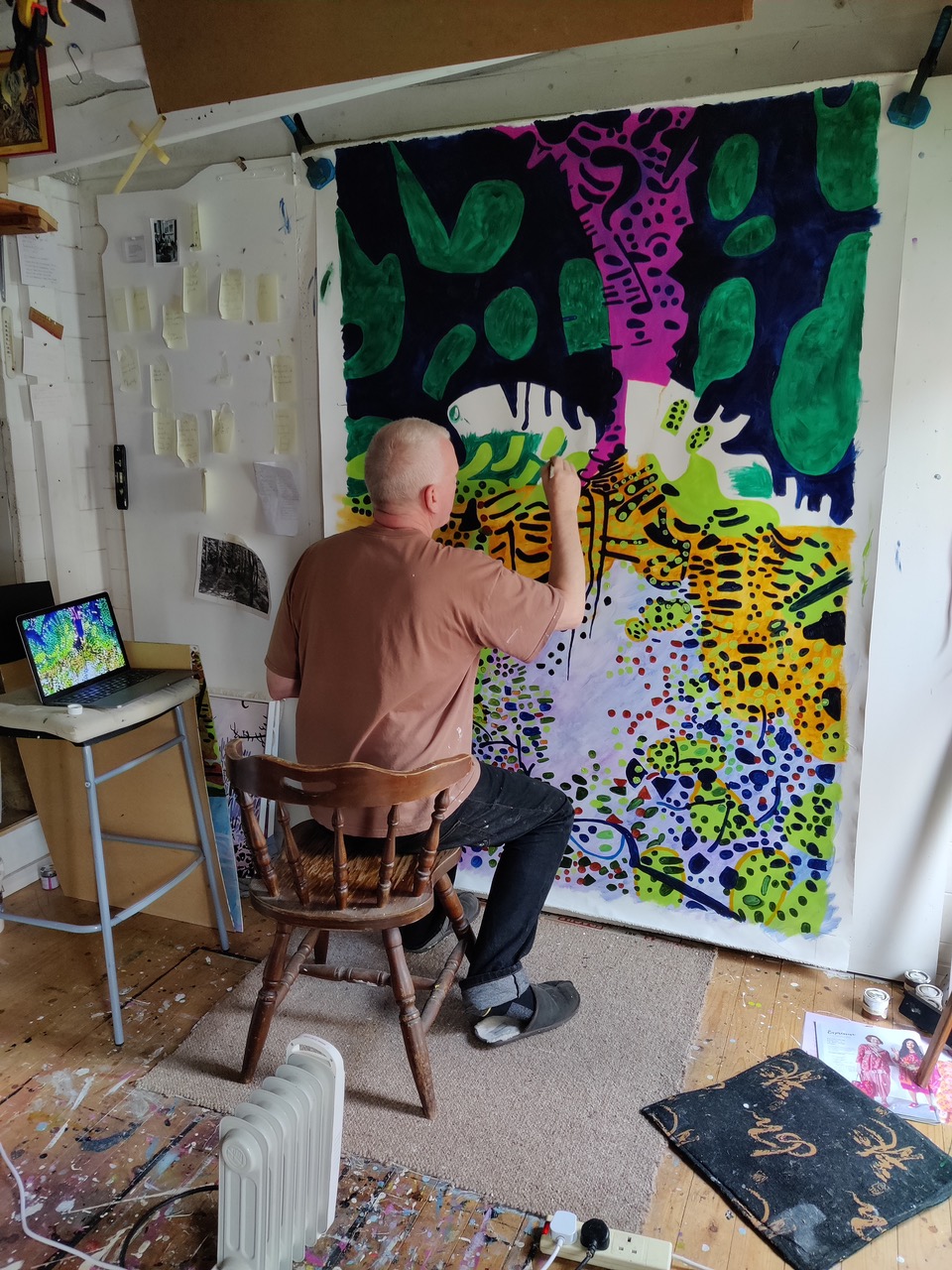
Professionally, what’s your goal?
I’d like to keep making work and supporting myself through it. Simple really.
Future plans?
After the winter when I make smaller work, I’m now back in my painting studio making bigger paintings and I’m looking forward to making more. I’ve a trip to Porto, Portugal coming up where I’ll spend time with Galeria Fernando Santos who show my work.


